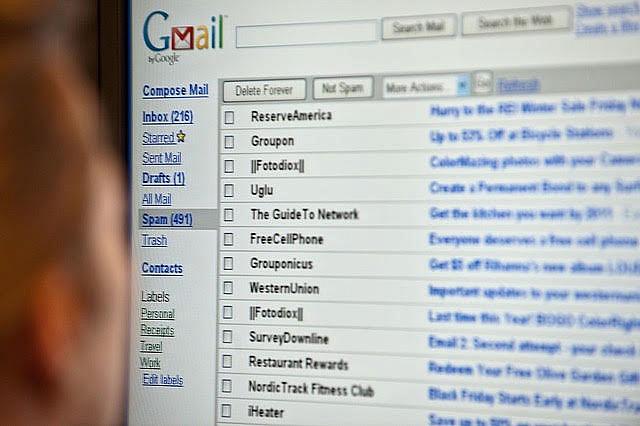How to use your email to challenge and invigorate your own reporting

(Photo: Nicholas Kamm/AFP/Getty Images)
Investigative journalists often develop dialogues with sources that last months and eventually years. You may start your career with a handful of go-to sources on a beat and then, over time, build up hundreds of sources in dozens of specific areas of interest. You often have many stories in development at the same time but one main story that you are pursuing.
All the while, your inbox is filling up with tips and queries from people wanting you to get back to them. You should periodically try to make sense of all that email clutter to challenge yourself. What stories are you ignoring? What stories may be occupying too much of your time? Are you spending too much time with one particular source?
For years, I put the address askantidote@gmail.com at the bottom of my posts for this site. I corresponded with people there. I asked people to send me ideas there. Surprisingly, I received very little in the way of spam. It was largely content that I wanted to read and people I wanted to hear from.
I decided to review my history of correspondence and find patterns. What I found surprised me.
First, I signed up for a service formerly offered by the Massachusetts Institute of Technology called Immersion. This was a project that grew out of the Massachusetts Institute of Technology’s Media Lab. It was created by three intellectually curious experts: physicist César Hidalgo, the head of MIT’s Collective Learning Group; data architect Deepak Jagdish; and software engineer Daniel Smilkov, who now works at Google. They all have since moved on and no longer support the technology. But you can find other services that offer the same thing. You can do a free trial, for example, of Email Analytics, a program that takes your email account, synthesizes the information inside it, and presents it to you in simple lists and graphs. It updates as you go, if you want to check it daily.
By doing this type of analysis, you can see very clearly the people with whom you have been in contact the most and whether they are connected to others who are also your contacts. By putting this information into a network visualization — not unlike the one that Hoaxy creates to track the social media rumor mill — you can see the sources with whom you have the most correspondence. You can see connections between the people you have emailed and who have emailed you. And you can see how long it is taking you to respond to people. Here are three interesting things I found out and what I’m doing as a result:
-
A tight knit group. I may be relying too much on just a few sources. Granted, this is one of many email addresses I have used over the years. But I was still surprised to see that the overwhelming bulk of email correspondence happened with just a small group of people. I have always prided myself on casting a wide net when it comes to gathering information. But it was clear to me when looking at my email data that I have corresponded intensely with a relatively small subset of sources to the possible exclusion of others.
Why does this matter? Well, if you were to look at your own patterns, you might find that you are heavily reliant on certain sources and potentially neglecting important sources that could provide new insights or even counterbalancing views for your stories. I now plan on reaching out to some of the sources with whom I had been in touch less frequently to find out of there is anything I should be pursuing. (I’ll let you know.)
-
New connections. Some of my sources are connected to people in a way I hadn’t fully appreciated before. When you receive an email from someone, you usually look at the body of the message first, maybe checking the “cc:” line at some point. Then you go back and forth with them, likely dropping everyone who was cc’d, depending on the type of correspondence. But when you see your emails visualized in network form, you become aware of all the connections between people that you may not have seen quite so clearly. It provides you with much needed context for the people with whom you are dealing. But it also can help you plan better for the ways in which your story will play out after you publish. Who is trying to influence whom? Who will be talking to whom? If you are writing about something that could lead to regulatory reform, for example, you may discover that the people in a position to push for that regulatory reform are already connected to you and have been for some time. I am now going to go into other email accounts I have used and see if these same — or even more interesting — patterns emerge.
-
Dropped calls. My most embarrassing revelation, and one that I am going to remedy, is how many email conversations were started and then dropped. As many of you have likely experienced, when you get going on a particular investigation, your mind can become laser focused. That’s no excuse for being rude, though. So, for those of you who corresponded with me via Antidote over the years and suddenly found yourself ghosted, prepare to be haunted. I’ll be sending you an email in the coming weeks to ask for forgiveness (and maybe tips, too).
Speaking of emails, please try an email analytics program and let me know what you find. Send me your ideas on Twitter @wheisel. I promise to write back!

